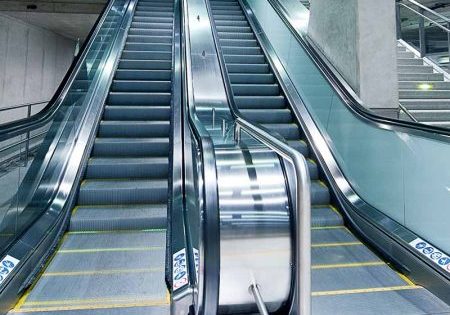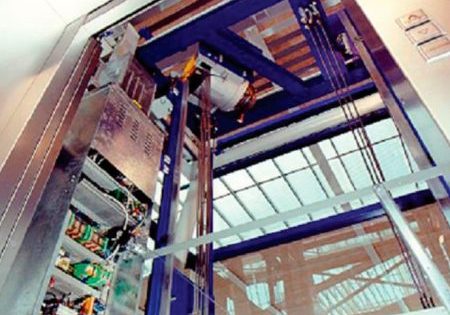Engineering for Safety
Jan 1, 2021

In this Readers’ Platform, your author says cab manufacturers’ involvement in design and testing of safety gears is vital.
by Muharrem B. Çakirer
One day, several years ago, I parked my car on a busy street in Ankara, Turkey. I had two problems: to take the elevator construction project documents to the building audit company and have them approved by the engineers there, and to get back to my car before it was ticketed. I entered the building almost breathlessly, but there were no engineers in the office — only a secretary for the building audit company. I was going to leave the documents there and then come back to get them after they were approved by the mechanical and electrical engineers. I was about to hand them to the secretary and leave the office when she asked me to wait and went to the next room. The noise of three stamps broke the short silence. The secretary returned and gave me the documents and told me it was done. I checked the documents; the projects were indeed approved completely. I was happy to finish my task quickly, but I was also surprised because the signatures were given, but there were no engineers around!
I experienced this incident when I was working at an elevator installation company. For me, it is noteworthy, as it indicates how engineers are positioned within the industry. Considering all the calculations, designs, projects and so forth, the elevator industry could be a wonderful working field; however, in our country, Turkey, where there are thousands of elevator companies, the situation of the sector and the position of the engineers do not seem good at all. Although there are good examples in which the engineers offer added value and demonstrate their engineering skills, the general condition at elevator companies is similar to the example above.
A parachute system, which is vital for the safety of elevators, is a complete engineering subject, as it requires delicate calculations, design and legislation knowledge. Contributing to the industry with original designs and creating new products is directly related to the employment of engineers.
Parachute systems are vital in high-speed elevators in terms of passenger comfort and safety but are not appreciated as much as they should be. Finding cheap safety gears on the market is an indicator of this. When the manufacturers and the contractors sign contracts, safety gears are generally in the shadow of cabin model choices. However, the less-dangerous parts of the elevators are the parts visible to the end users, while the invisible parts — like safety gears — are the parts that come with more risks. In this article, we will evaluate the progressive safety gears that are obligatory for elevators with a rated speed that exceeds 1 m/s.
Directive 2014/33/EU defines six products as safety components. Two of them, the overspeed governor and safety gear, work together to maintain safety. The function of the overspeed governor is to keep the safety rope stretched enough and to stop the elevator when the rope loosens. If the suspension ropes carrying the elevator shear off or the downward speed increases extremely, the safety rope, one side of which is connected to the cabin, is pulled. The electrical safety device on the safety gear cuts off the power supply to the traction system and stops the drive machine; meanwhile, the progressive safety gear grips the guide rails, clamping the elevator to the rails.
The simplest way to stop a moving object within a certain time is to absorb its kinetic energy by converting it into heat through friction. In general, when a safety gear mechanism is activated, half of the safety gear connected to the cabin contacts the rail through springs, while its other half is pressed to the rail through the wheelhouse, or “roller.” The rail is clamped between these two parts. The normal force generated turns into friction force and starts using the kinetic energy of the cabin. The friction continues until the cabin stops.
The progressive safety gear is a mechanical system. It can be installed to the lower or upper supporting girders of the cabin sling. If there is a living space like a residence or office under the lift well, the counterweight shall also be equipped with a progressive safety gear.
The average retardation for a progressive safety gear in the case of free-fall of the car with rated load or the counterweight shall lie between 0.2 gn and 1 gn. (gn, which is standard acceleration of freefall, is equal to 9.81 m/s².) To maintain the safety of life and property, ideally, the brake should engage with an average retardation of 0.6 gn. High retardation means the cab is stopped within a short distance. For example, if an elevator brakes with average retardation of 1.0 gn, it will stop sharply, as the shifting distance is short. If it is higher, sudden braking poses a greater risk for children, the elderly, the sick and pregnant women. In cases in which it is lower than 0.2 gn, the braking distance will be long.
Safety Gear Tests During Registry Inspections
With the full-load braking test, rails, console connections and the conformity of the machine frame installation are tested, in addition to the safety gear, before the elevator is placed into service. During safety gear tests at registry inspections, the total braking distance has always been the subject of debate.
For the registry inspection of elevators installed in accordance with 2014/33/EU Directive, EN 81-20, Article 6.3.4 of the safety gear test is made while the cabin is loaded with 125% of its rated load.
The braking distance, based on the activation of the overspeed governor at a rated speed of 1 m/s, is calculated with the above formula.
After the safety gear test, the cabin is positioned in a way that allows for measurement of the marks on the rails. Both sides of the rail are checked for brake marks, the height and width of the marks on the rails is measured, and inspectors check to see if there is distortion or breakdown evident on the cabin. According to the results of the load test, an elevator that brakes with a rated speed of 1 m/s is considered compliant if the safety gear slides 5 cm minimum and 25 cm maximum.
To release a safety gear on the car, a command to move in the opposite direction shall be sufficient. This should automatically reset its pre-test mode, and the cabin and sling should be freed from the rails. The elevator should not, however, be returned to service immediately after the safety gear is released; commissioning should only be allowed after the intervention of competent maintenance personnel.
The safety gear blocks that form the brake band are connected to each other with transfer rods that facilitate simultaneous engagement of the brake blocks.
The synchronization of two brake blocks will be better if a solid material is used in these connections.
As an engineer working in the manufacturing industry, I feel it is necessary that the cabin manufacturers also provide the safety gear to be used with their cabins. This way, if there is a problem with the safety gear, the customers will be able to find a single responsible party, and the cabin manufacturer will have to find a solution.
I strongly recommend that safety gear manufacturers attend the Type-Examination of safety gear carried out by a Notified Body. It may sound strange, but the first tests should fail. When this happens, the manufacturer will see that the braking acceleration of the tested safety gear is beyond the ranges allowed by the standard. It should even see that the brakes fail, and the elevator crashes. In this way, the manufacturer can understand the importance of its work and have the opportunity to see, before the product is put on the market, the negative scenarios that may be experienced in the future. Seeing that a safety gear is tested dozens of times, the manufacturer will learn its approach and design from failures and change. As a result, it may manufacture a product closest to the ideal — just as Edison invented the lightbulb after thousands of failures. All manufacturers should know that disasters are likely unavoidable after the product is placed on the market.
References
[1] EN 81-20:2014
[2] EN 81-50:2014
[3] 2014/33/EU Lift Directive
Get more of Elevator World. Sign up for our free e-newsletter.







